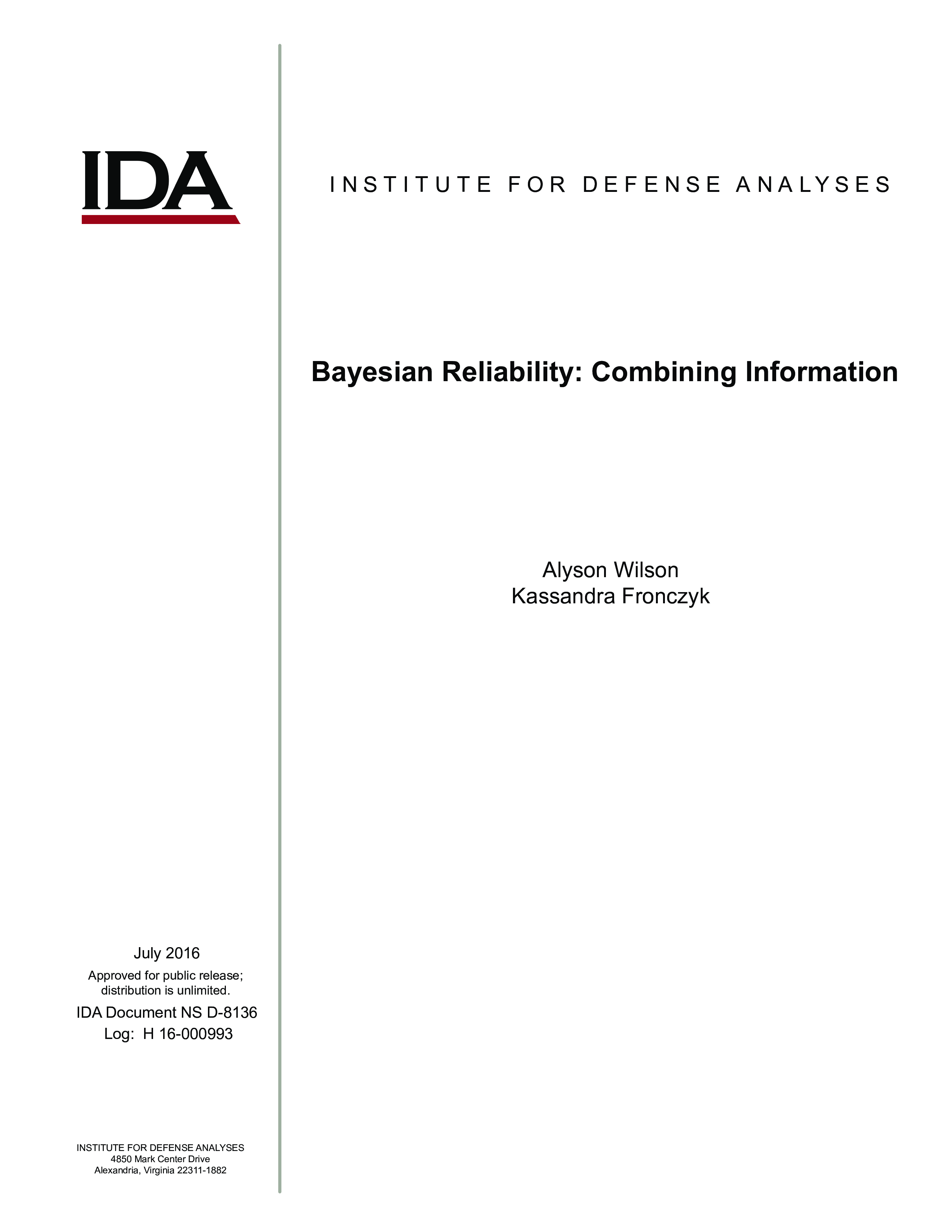One of the most powerful features of Bayesian analyses is the ability to combine
multiple sources of information in a principled way to perform inference. This feature can
be particularly valuable in assessing the reliability of systems where testing is limited. At
their most basic, Bayesian methods for reliability develop informative prior distributions
using expert judgment or similar systems. Appropriate models allow the incorporation of
many other sources of information, including historical data, information from similar
systems, and computer models. We introduce the Bayesian approach to reliability using
several examples, and point to open problems and areas for future work, including:
-
Reliability for various types of systems: on-demand with pass-fail testing
(notional SDB-II data) and continuous lifetime data (viscosity breakdown
times). These examples include definitions and illustrations of prior
distributions, likelihood and sampling distributions, posterior distributions, and
predictive distributions.
-
Additional discussion of how to specify prior distributions is provided, along
with brief descriptions of methods and possible resources for more complex
analyses like hierarchical modeling, system reliability with subsystem or
component level testing, and implementation using Markov chain Monte Carlo
techniques.
-
Finally, some open research areas are discussed regarding combining
information across multiple tests for assessment purposes and to plan an
appropriately sized follow-on test.

